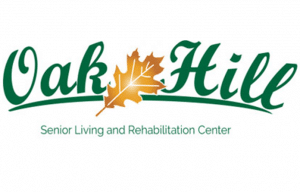COVID cases spike in and around Monroe County
Monroe County just experienced its largest single-week jump in coronavirus cases since late March and early April, with more than 50 new cases reported since July 8.
“From what I can tell, it is a little of everything,” Monroe County Health Department Administrator John Wagner said as to why case totals increased. “We have more testing, things open with more risk and spread in individual households is very hard to prevent.”
The county’s overall case total since the pandemic stands at 198, while the death toll remains at 13 because the state is still counting a woman in her 80s who had the virus and died but tested negative right before she died.
There are 82 active local cases and four people hospitalized with the virus. After no new cases were reported Friday, four were reported Saturday, three were reported Sunday, six were reported Monday and one was reported Tuesday. There were 12 new cases reported Thursday, four on Wednesday, six on Tuesday and seven last Monday.
Wagner on Friday said the county had seen “a substantial increase in positives,” with 50 percent of those being among people in their 20s.
“It appears that the days around the Fourth of July saw substantial people getting together,” Wagner said. “We have not been able to track (cases back to) any one gathering or behavior to the increase. We have seen a few cases traced back to float trips, parties or other gatherings but have not seen any large numbers from any one event or behavior. I want to remind individuals that any time they are in groups and not social distancing or wearing mask, their chances of infection increase. Individuals just need to be aware that (being) unmasked in groups will increase their risk and that everyone has the ability to determine the amount of risk they are comfortable with.”
On Thursday, Ss. Peter & Paul Catholic Church announced that it was suspending all liturgical events, including in-person mass, until Aug. 1 because one of its office staff caught the virus. The person began experiencing symptoms during the week of July 6 and was last at church July 9.
“The health and safety of everyone who is part of our community is of great importance to us,” Father Osang Idagbo wrote on the church’s website. “We will be following the Illinois Department of Health’s cleaning and disinfecting protocols for the office and church.”
The church has also reported the case to the county health department and Diocese of Belleville.
Another recent person who contracted the virus is Monroe County Sheriff Neal Rohlfing. Read more on that here. A second member of the sheriff’s department has also tested positive.
Monroe County Electric Cooperative recently had an employee whose spouse tested positive, resulting in the MCEC employee and four other co-workers being placed under quarantine.
“As of now, no employee has a positive test,” MCEC Director of Member Services Allan Masterson said. “We are following the county health department advice for the rest of the employees.”
Prior to this week, Monroe County was seeing around 10 or fewer new cases per week.
Wagner told the Republic-Times the county is now averaging about five new cases per day, though he said that is “not too much” of a cause for concern.
“It’s spreading more because things are open more,” Wagner said. “It seems like younger people and healthier people are getting it. Obviously, it’s a concern because I don’t like seeing people getting sick. But as far as a public health concern, our hospitals are still well within capacity and we’re not seeing anything that really needs to change yet.”
Wagner said he would become more concerned if hospitalizations rise or capacity becomes strained.
He said the goal now is ensuring hospitals do not become overwhelmed and preventing people more susceptible to COVID-19 from getting it.
“If you are a member of a vulnerable population not in a nursing home or something like that, you need to still be under those stay-at-home type (precautions) because you don’t want to increase your risk,” Wagner advised. “There is more risk right now. If you used to go to the grocery store and think ‘oh it’s fine,’ there is more risk of going to the grocery store right now than there was two months ago or even a month ago.”
Gov. JB Pritzker also released a coronavirus mitigation plan on Wednesday that outlines steps a region could take in specific industries if the virus resurges. Read more on that by clicking here.
Wagner also disclosed more about how the virus is tracked.
At the county level, he said his department does not monitor how many cases are symptomatic and how many are asymptomatic.
“That would be difficult to determine because some/many are tested and do not have symptoms at the time of test but are not truly asymptomatic because they develop symptoms later,” Wagner explained.
Monroe County also does not calculate its positivity rate, which is the percentage of tests that come back positive for the virus.
“It’s very difficult, especially in our area, to come up with that because of the testing across the river,” Wagner said. “We’d have to be able to track everybody that was tested. We do have the negative reports from the people who have been tested, but we don’t have the ability to see who has gone for multiple tests and stuff like that. So we don’t have a good way to track that.”
Additionally, Wagner clarified that a person who repeatedly tests positive for the virus only counts as one case per person.
“If someone tests positive, they are counted once,” he said.
As cases rise, Waterloo Walmart began requiring customers to wear face coverings in its store last week. There is additional signage and training for Walmart employees who deal with coronavirus-related issues, although enforcement of this requirement was questioned by residents on social media.
“COVID-19 protocols have continued to adapt during the pandemic in response to evolving research and mandates spanning the country. Additional safety changes took effect July 9 to expand our efforts in reminding customers of the importance and necessity of wearing face coverings in our stores,” said Casey Staheli, a Walmart senior corporate communications manager.
Walmart on Wednesday announced that all of its stores nationwide will enforce a mask requirement beginning July 20.
Schnucks, which has required the use of masks by its customers for months, said it will also begin enforcing face coverings on July 20.
According to the Illinois Department of Public Health, the Waterloo zip code has had 88 confirmed cases (1,977 tests), the Columbia zip code has had 82 cases (745 tests) and the Valmeyer zip code has had 14 cases (119 tests).
To the north, St. Clair County has steadily increased to 3,138 confirmed cases, including 149 coronavirus-related deaths. A total of 28,020 have been tested there. The positivity rate is approximately 11 percent.
To the south, Randolph County has had 375 confirmed cases, 62 of which are active. Seven people have died from the virus, 306 have recovered and none are hospitalized with it in that county. The positivity rate is 7.6 percent in Randolph County.
The North County News also reported Wednesday that Chester Mental Health Center has experienced an outbreak of COVID-19. Thirty-one people there have contracted the virus, including one person from Monroe County.
In the newly-defined Metro East region, which includes Monroe County, the positivity rate has increased in the last seven days for which data is available, climbing to 7.1 percent on July 17. It was at 4.9 percent July 9. As of Tuesday, the Metro East has the highest positivity rate of any region in the state.
The region has seen a single-day increase in its 7-day rolling average for hospital admissions. It also has 42 percent hospital availability and 52 percent ICU bed availability.
For actions under Pritzker’s new mitigation plan to take effect, a region must have a sustained increase (7 out of 10 days) in its 7-day rolling average for its positivity rate and either a sustained 7-day increase in hospital admissions for COVID-19-like illnesses or a reduction in hospital capacity threatening surge capabilities. Alternatively, a region could see mitigation actions occur if the average positivity rate is greater than or equal to 8 percent for three consecutive days.
The IDPH county-specific tool designed to help individuals determine what activities they choose to do measures the risk metrics of new cases per 100,000, number of deaths, test positivity percentage, number of tests performed, emergency department visits for COVID-19-like illnesses, hospital admissions for COVID-19-like illnesses, cluster percentage of cases and percentage of ICU beds available.
For all of the metrics, save cluster percentage of cases, the state lists a target number and shows whether a county meets that target or exceeds.
For the week beginning July 5, which is the most recently available data, Monroe County does not meet three of those targets, leading the IDPH to classify it as one of only four counties in the state that are higher risk. The other counties are St. Clair, Union and Clark.
Monroe County’s case rate is 84 per 100,000 people (the goal is 50), its test positivity rate is 9.6 percent (the goal is less than or equal to 8 percent) and it performed 282 tests last week. The state deems testing to be sufficient when the positivity rate is at 8 percent or lower. The county meets the other criteria.
There are 163,703 cases of coronavirus and 7,324 deaths in all of Illinois, according to the IDPH.
The state reported 955 more cases and 23 more deaths on Sunday. It announced 1,173 new cases and 6 new deaths on Monday. It announced 1,384 additional cases and 22 additional deaths on Friday. It announced 1,257 more cases and 25 more deaths on Thursday. It announced 1,187 new cases and 8 new deaths on Wednesday.
In Missouri, there are 34,762 confirmed cases and 1,143 deaths. That includes 9,1044 cases in St. Louis County and 3,341 cases in St. Louis City, according to the Missouri Department of Health & Senior Services.
Nationally, more than 3,875,709 people have contracted the virus, while 141,473 people have died.
Worldwide, there are over 14.7 million cases of coronavirus and at least 611,299 COVID-19-related deaths.
Congestion, runny nose, nausea and diarrhea are the four most recent COVID-19 symptoms the Centers for Disease Control and Prevention added to its growing list of potential signs of the novel coronavirus. The CDC previously said symptoms include chills, fever, muscle pain, headache, sore throat and a new loss of taste or smell.






